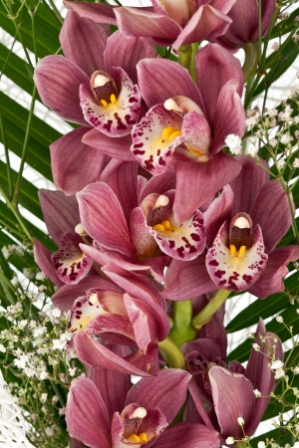
Before you go shopping for new orchids, take some time to become familiar with some guidelines that help ensure you will get a healthy orchid that is capable of blooming beautifully during the growing season.
Buying an orchid is a bit like buying wine – you can pick up any old orchid along the way, or you can take some time to find the really good specimens from quality orchid suppliers.
Orchids are generally beautiful, but if you want something with longevity that will survive for years, you really must take some time in choosing the supplier. Asking friends for referrals is a good way to find a good orchid supplier.
The majority of first-time orchid buyers like the idea of purchasing a fully-bloomed orchid because it provides instant beauty to any garden. But there is potential risk to purchasing an orchid that has already bloomed: variants like the phalaenopsis often produce flowers to the point that they are unable to recover the next blooming season. Or in other words an orchid that is in full bloom may actually be an orchid that is about to expire.
Following these guidelines will help you find healthy orchids you can enjoy.
The Wiggle Test
To check if the orchid has attached itself firmly to the available plant media, use the “wiggle test”. The wiggle test is simply holding the plant near the roots (not the roots itself) and shaking it gently. If the orchid has been able to send out its root network firmly into the potting material/potting base, the base will be firmly attached to the roots. But be careful not to separate attached roots from the base material.
Orchids like cattleya and brassavola, as well as dendrobium can be inspected easily using the wiggle test. If you find some roots sticking out from near the top of the potting material it is okay as long as the entire plant appears to be healthy and actively growing. If the potting seems inappropriate or inadequate, you can still buy the orchid as long as you re-pot it once you get home.
The Root Network
The most important part of an orchid is its root network. The complex root network is responsible for anchoring the orchid to the potting material and transmitting the moisture, minerals and other nutrient from the potting material, too. If the roots are damaged, the plant suffers, plain and simple.
Healthy roots usually look light green when they are relatively dry and when they are wet, roots can become dark green. If the roots of the orchid appear tan, light brown or white, then the orchid can be approaching death. If the roots of the orchid appear disheveled and very dry it means that the roots are no longer drawing water from the base material. If this is the case the orchid will not survive much longer.
The Leaves
The leaves are also of important to the survival of the orchid. Take note of the following when inspecting the leaves of orchid plants:
- Slightly yellow-green leaves are fine – as long as the yellowing does not extend to the whole plant, including the stems. If you want a good color guide, just look at green apples. The color of the common green apple is ideal for orchids.
- Glossy leaves may be a sign that the orchid has been given too much fertilizer. You can still buy the orchid, but the blooming capacity of the orchid may have already been affected.
- Look for orchids with leaves that are firm and hard which are signs that the orchid is in active state and is healthy. Check the leaves to make sure there are no blemishes. Discolorations and small holes usually point to pest problems. If the structural damage to the orchid is significant, then the plant is definitely a no-no.
- Check other orchids from the same supplier to see if the same blemishes are present. If so, then do not buy from the supplier and look for another supplier who does a better job controlling pests.
- Inspect the orchid’s leaves to ensure that there are no soft, mushy or rotting parts.
The Bulb
The growth bulbs are the points where new stems and flowers can grow. Some orchids (e.g. phalaenopsis) have just one growth point. Others, like the cattleya utilize elongated rhizomes for growth. Always check to see if the bulbs (the newest bulbs are called “pseudo bulbs”) are healthy-looking and plump.
Blooms
Avoid orchids that have already bloomed completely. Orchids with some opened buds and some closed buds are a good choice, which make it possible to enjoy the orchids blooming in the coming weeks.
Find a Quality Supplier
It is best to use a supplier that marks the orchids with their scientific names (or at least, their popular common name e.g. chocolate orchid, bumblebee orchid, etc.). Some suppliers simply write “blooming orchids” on the tags of the orchids. These tags are not very helpful, especially to beginners, because they do not actually identify the genera or species of the orchids.
Related Articles & Free Email Newsletter
Light Reflections & Reflectors for Orchids
Magnesium Supplementation for Orchids
Subscribe to our Free Email Newsletter
Information for this article was provided by EzineArticles.com



Comment here